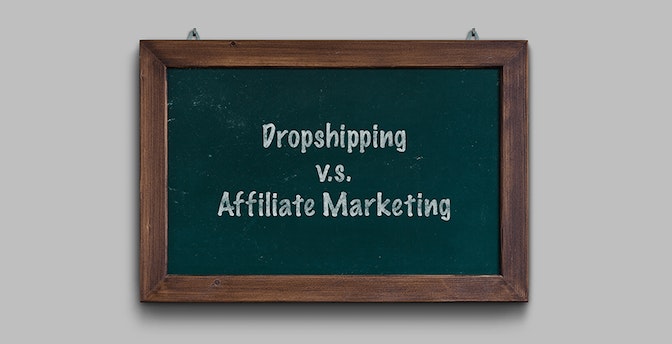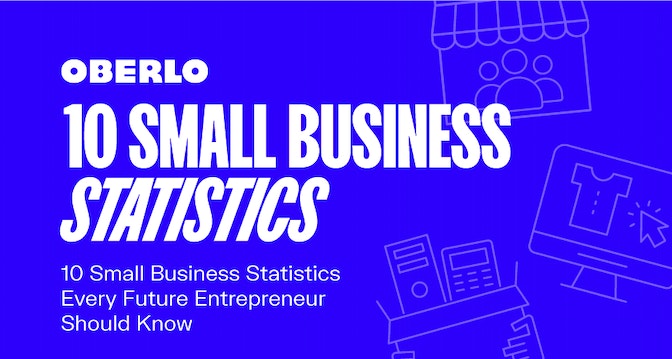Ecommerce is agoliathindustry. So it’s no wonder people are always asking about the future of ecommerce.
Global ecommerce salesare expected to reach $5.7 trillion worldwidein2022, proving ecommerce is an increasingly lucrative option for businesses.
That’s huge, and the good news is that it certainly isn’t a new trend.
Ecommerce is also an industry that’s ever-changing. Trends are constantly shifting in an attempt to shape the way people in every corner of the globe purchase products.
This makes the future of ecommerce exciting.
A lot of big things are expected to change in the ecommerce market over the coming years. We’re here to help you understand what the future of ecommerce will look like.
我们要打破me of the top trends in ecommerce for 2023, discuss what we believe the most impactful changes will be over the next few years, and dissect why those changes might come about.
There’s a lot to cover, so let’s dive in.



Future of ecommerce for online retailers
1. New marketing channels will emerge
In the past few years, there have been advancements in several areas of ecommerce marketing—including a new mix of channels.
For example, brands can run ads on social media platforms, as well as tap into commerce, with the release of Instagram and TikTok shopping features.
Plus, as an extension of social commerce, live shopping has started to gain traction worldwide. In China, the live commerce market is expected to grow to $4.92 billion in 2023. The concept is also emerging in the US, with20% of shopperssaying they’ve engaged in live commerce.
Another new channel ecommerce companies are exploring is connected TV advertising. This involves running ads on platforms like YouTube TV, Roku, and Hulu. Athletic footwear brand Hoka tapped into this marketing strategy and reported a68% increasein website visits following its TV ad campaign.
2. The physical vs. online debate will heat up

We can’t talk about the future of ecommerce without mentioning the ever-growing physical versus online debate.
Generally, people within the ecommerce industry fall into one of two camps in this debate.
There are people who believe that it’s just a matter of time before brick-and-mortar stores fade out in favor of an even bigger shift toward online shopping. And there are those who see physical shopping as entering a renaissance period.
Our stance? It’sundeniablethat the growth of online shopping is far outpacing the sales from brick-and-mortar stores.
But that doesn’t mean brick-and-mortar stores aren’t still incredibly valuable assets for ecommerce brands.
Instead of functioning as a real-life version of their online stores (which typically have access to a lot more inventory), brick-and-mortar locations seem to be switching toward offering unique shopping experiences.
Take a look atNike,哈s already expanded in New York and Shanghai with its brand-new experiential shopping locations, or as it calls them, “Houses of Innovation.”
At Nike’s new physical stores, you can pick up exclusive products, customize products with your own hands, partake in fitness tests, try out products by playing fun games, enroll as a personal shopper, and more.
These are experiences you simply cannot get online, and go a long way in encouraging customer loyalty.
3. More consumers will use voice search
In 2022, voice-activated devices were predicted to facilitate$40 billion worthof transactions. Compared to the 2017 figure of $2 billion for transactions made via voice search, this is a big increase.
How are shoppers most likely to use voice search? Narvar says51%of shoppers use voice search to research items, while 36% use voice search to add relevant products to their shopping lists.
To be more voice-search friendly in 2023, consider optimizing your product information pages for common voice search commands. For example, people may ask their voice assistant questions like, “Where can I get Under Armour products at a discount?”
4. Automation, automation, automation

Automation is poised to be a key element in the world of ecommerce. Already,61%of companies worldwide use some kind of automation software and tools. As its benefits become clear, more businesses are expected to invest in automation in the upcoming year.
For ecommerce businesses, automation stretches from marketing automation to warehousing and beyond. It’s a great choice because itfrees employees’ time and resourcesfor more important work.
For example, an ecommerce business that possesses large warehouses to carry out its operations can invest in robotics to become more efficient and free up staff to do more important tasks in the fulfillment process.
Supply chain management can benefit from automation software that can schedule inventory alerts for reordering when stock gets low.
The sky’s the limit for ecommerce automation. With a little research, you can find software that will help your product.
5. Private label to become more common
Private label means that a unique productis produced by one company but packaged and sold under another company’s own brand name. Companies rely on manufacturers to produce products that are highly specific to their audience’s needs.
Why is this an ecommerce trend? If you operate in a niche industry that relies on certain materials not being used, or certain standards being obtained, you know that private labeling is the right way to go for your business.
For example,VegexProprovides private label products with certifications like Organic, HACCP, Kosher, Halal, RAW, Vegan, Gluten-Free, and Fair Trade. This company would be a great manufacturer for you to work with if your customers want vegan or gluten-free products.
For an online store that sells non-branded or dropshipping products, private labeling can be the right next step for your business.
6. Brands will lean into sustainability
As consumers become vocal about climate change, more and more companies will have to develop initiatives around sustainability. Doing so can be good for business—studies show that climate-first stores achieved5.8 times faster growthand saw their conversion rates increase by 20%.
Although there are several ways to showcase sustainability, an easy route is to use sustainable packaging. Label manufacturer Avery Dennison leverages this tactic to ensure customers are satisfied with the way it does business.
Whether it’s eco-friendly packaging or using suppliers that put climate first, finding ways to be more sustainable will be a crucial trend moving forward.
Future of ecommerce for marketers
7. Device usage will become even more important

When it comes to discussing the future of ecommerce, one thing is clear: there will be much more importance placed on the devices that buyers use when they’re shopping online.
But why exactly?
In the past, most ecommerce businesses built their shopping experiences to be desktop-first.
Now, it’s the opposite. Ecommerce businesses are hellbent on designing and building their online businesses with mobile commerce in mind.
And it’s going to be fairly simple to please your audience if you’re running your store on Shopify.
You’ll have access to awealth of themesbuilt to ensure a seamless shopping experience, no matter which device your customers use.
Plus, you can easily check the adaptive version of your store’s design by simply resizing your browser—make it smaller when you’re on a desktop and you’ll see exactly what your mobile audience sees. This is one of the many perks of running your business through Shopify.
Need help picking a theme for your store? Check out our guide onpicking the best Shopify themefor your business.
8. Personalization will be the key to success
Ecommerce companies are constantly honing the shopping experience for their customers.
There are now algorithms in place to track shopper activity, which enable companies to consistently optimize their advertising campaigns. They’re constantly working to show you the products that they believe you’re most likely to purchase.
But we might be reaching a breaking point.
Across the web, people seem to be becoming fatigued from knowing that algorithms are messaging them rather than real people, and are now craving personalization in their shopping experiences.
Buyers want to feel that there’s somebody behind the computer screen who cares about them. It doesn’t need to be anything too complex either—it could be as simple as a personalized email, a curated discount code, or something else.
Research backs this sentiment, with76% of consumerssaying that receiving personalized communications was a crucial factor in making them consider a brand.
So what does this all mean?
An integral part of ecommerce will revolve around businesses and entrepreneurs finding ways to builddirect relationships与他们的客户。
9. Customer experience will be prioritized

Both the pre-purchase and post-purchase customer experiences are important to the success of your online business.
Hiring amazing sales assistants in-house who can guide your customers through the sales process can alleviate any stress customers may feel.
Analyzing your sales process online to learn what a customer would expect is super important for your ecommerce store. This means potentially user testing your sales channels or your checkout flows with actual people to identify pain points that customers may have.
Things you can user test on your website include:
- Yourcall to action
- The length of your checkout process
- The information asked for on thecheckout page
- Your messaging
- Your product page flow
This activity should improve your business’scustomer experience. Recently, this discipline has grown in popularity, making it a big ecommerce trend for 2023.
10. AI and chatbots will become personal assistants

Leading on from our previous ecommerce trend is the use of AI and chatbots to help customers achieve their goals when they are on your site.
Chatbotshave been around for a few years and are constantly evolving to assist customers on social media channels and beyond. This is ideal for businesses that operate in many different countries but don’t have the resources to be online, helping customers 24/7.
AI assistants are also very important to online stores, as they can manage stock levels, reordering, and other processes that can free up your day to deal with activities you normally wouldn’t have time for.
人工智能和过去聊天机器人真的起飞few years, but technological advances mean that this trend will continue into the future.
With each passing year, AI is being adapted to another discipline or department in a business. If you have a Shopify store, check out some ofthese AI appsthat can help your business today.
11. Interactive products will be a thing
One of the biggest disadvantages of ecommerce is that customers cannot try out the product before they buy it, like in a brick-and-mortar store. Typical consumer behavior shows that people are more satisfied when they can touch, feel, and try an item before investing in it.
On ecommerce websites, this experience is nearly lost, but technology is always one step ahead. With augmented reality technology, you can create immersive shopping experiences where shoppers can engage with products before they buy them.
For example,Shopify ARallows brands to show customers their products in natural environments before buying them to ensure that the product fits the intended purpose. This helps customers make great decisions quickly when it comes to choosing a brand to buy from.
交互式产品通过AR或虚拟现实是一种新的混乱关系nd, but it is quickly being adapted within ecommerce brands to help customers choose the right product. If you are considering which ecommerce trend to be a part of, this is a good place to start.
Closing thoughts on the future of ecommerce
The future of ecommerce will undoubtedly be full of exciting changes and innovations for both businesses and buyers.
Whether you’re an entrepreneur or working at an ecommerce company, it’s important to keep your finger on the pulse when it comes to changes in the ecommerce landscape.
Our best advice is to keep on learning.
Read articles. Watch videos. Listen to podcasts.
Try to consume as much information as possible about the field of ecommerce—that’s how you’ll get an edge on your competition.
So, what do you think? Do you have any predictions for the future of ecommerce in 2023 and beyond?
Was there anything we missed that you’d like to learn more about? Let us know in the comments section below—we read them all!






